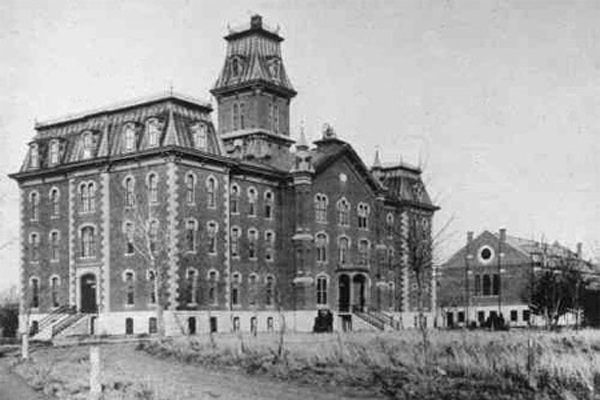The Morrill Act, also known as the Land Grant Act, was signed by Abraham Lincoln in 1862. This act, named after its sponsor, Vermont congressman Justin Smith Morrill, gave each state thirty-thousand acres of public land for each Senator and Representative it had in congress. These numbers were based on the census of 1860.
The land was then to be sold and the money from the sale of the land was to be put in an endowment fund, which would provide support for the colleges in each of the states. When Nebraska became a state in 1967, one of the first acts of the new state legislature was to charter a land-grant institution for its people. The University of Nebraska was to become that institution with affordable education for all the people of Nebraska regardless of race.
In 1909, the university was admitted as the eighteenth member of the Association of American Universities as its student population rose to nearly four thousand. When the university began to outgrow its original four-block city campus, a student activity center, known as the Temple Building was built. Matching funds given by petroleum magnate John D. Rockefeller, a friend of Chancellor E. Benjamin Andrews, were used to complete the building. The donation created an uproar among Nebraska populists such as William Jennings Bryan, who considered Rockefeller’s oil money to be tainted.
A number of buildings from those early days survive today as reminders of this era, including Brace Laboratory, Richards Hall, and the first law college building.
The city campus continued rapid development during the 1920s. This period brought such monumental structures as Social Sciences Hall, now home to the College of Business Administration, and Morrill Hall, also known as the University of Nebraska State Museum and named after the sponsor of the Morrill Act. The period also saw the rise of athletic excellence at the University of Nebraska with the construction of two large-scale sports complexes — Memorial Stadium and the Nebraska Coliseum.
The student union, several large classroom halls, and Love Memorial Library, whose stacks served as a barracks during World War II, were built during the 1940s war years. By 2014, theUniversity Libraries housed more than 2.5 million books located in the main library and in branch libraries on both campuses.
One hundred years after the University of Nebraska was chartered, the university was redefined as an “umbrella” organization made up of three campuses; the University of Nebraska-Lincoln, the University of Nebraska-Omaha, and the University of Nebraska Medical Center. In 1991, Kearney State College was added to the NU system, becoming known as the University of Nebraska-Kearney.
Another building boom started in the 1990s with large-scale facilities as the Beadle Center for Biomaterials Research, the Kauffman Center residential learning community, a new building for Teachers College, and major expansions of Memorial Stadium and the Nebraska Union being undertaken. In the new millennium, several notable new buildings have opened, including the International Quilt Study Center and the Ken Morrison Life Sciences Research Center on East Campus, as well as new apartment-style residence halls on City Campus.





